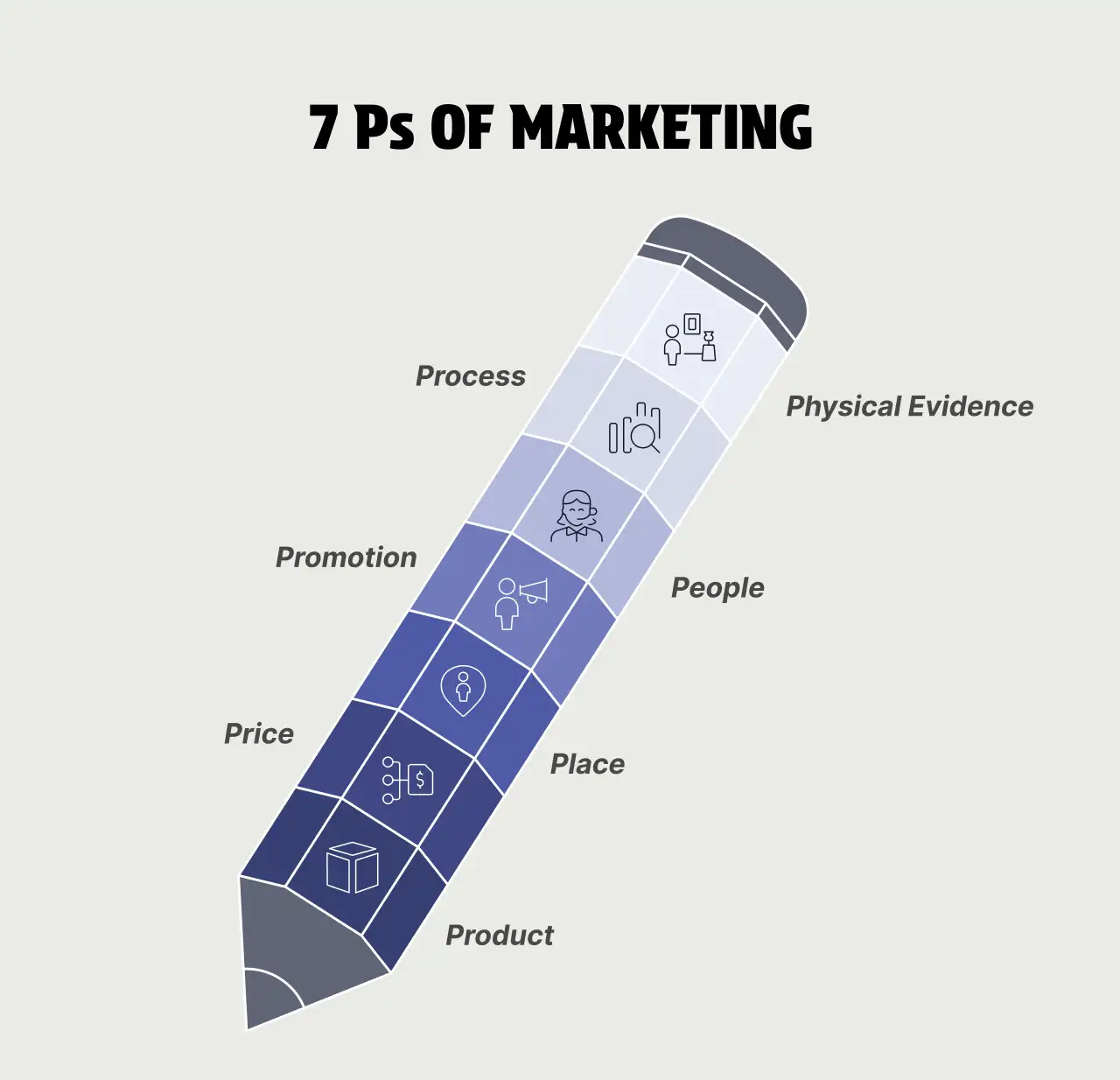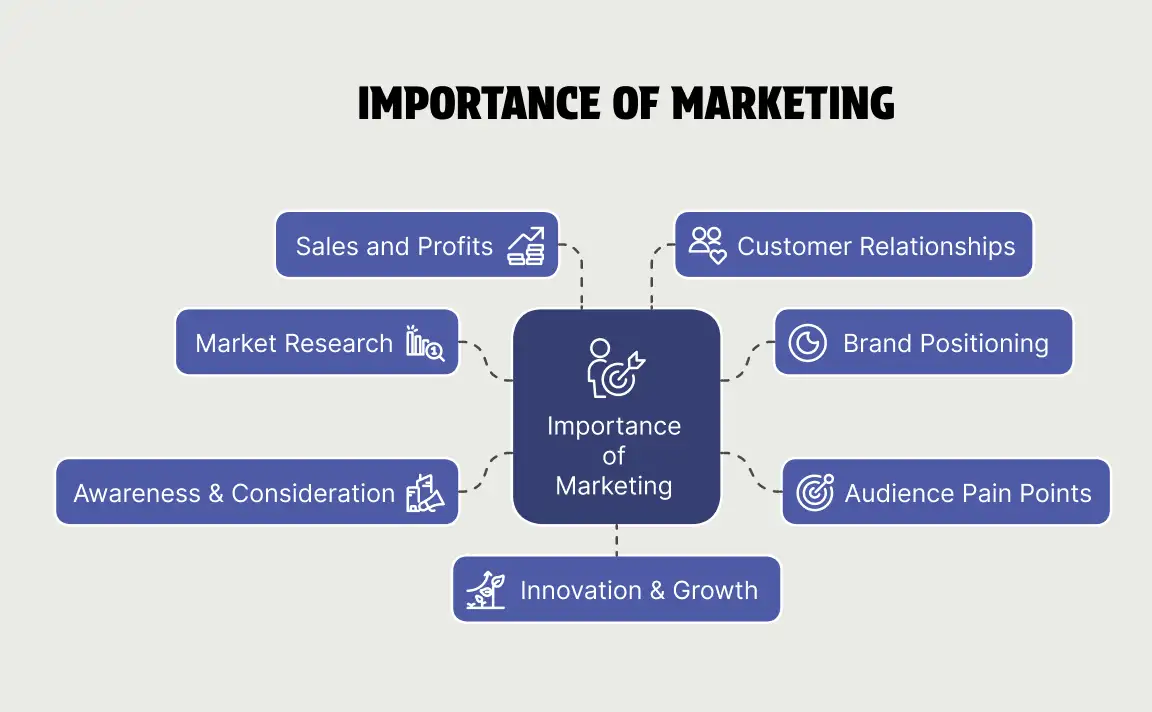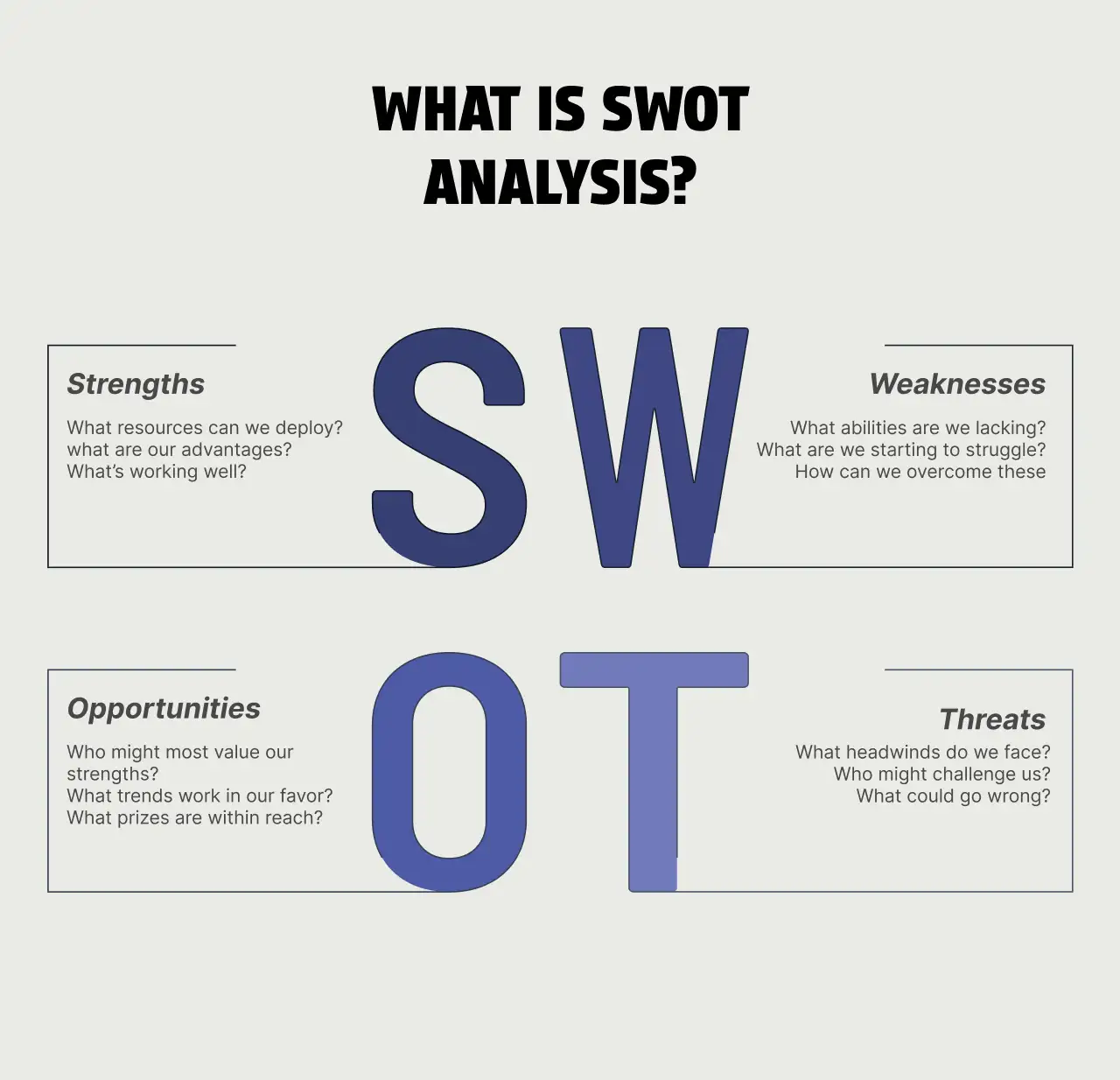Marketing has always been the foundation of a business. It serves multiple purposes, including market research, implementing growth strategies, and nurturing customers to maintain a great relationship.
Marketing has evolved significantly from what it was a few years ago. It has revolutionized the entire advertising landscape; it is now easier to analyze and quantify marketing efforts, providing several opportunities for improvement.
In this blog, We'll explore the scope of marketing, including its definition, importance, roles, and ever-evolving nature.
What is Marketing?
In simpler terms, Marketing is an approach that a brand uses to position itself, build customer trust, and increase sales over time.
It is a holistic way of presenting the brand in the market, encompassing all aspects from developing a value proposition to satisfying consumer demands and boosting revenue.
Marketing is more than just sales strategies; it is the foundation of any company that aims to reach a wider audience. It plays numerous roles for any company that seeks to
- grow exponentially
- establish a healthy relationship with its clients.
Also Read: Marketing vs Advertising
7 Functions of Marketing
| Function | Description |
|---|---|
| Product Management | New product and service development and management based on demand. |
| Pricing Model | Competitive and fair pricing that gives better positioning and recognition in the market. |
| Advertising | Creating advertising strategies to promote the offerings to a suitable target audience. |
| Distribution | Products are available at the physical and online stores for the customers. |
| Sales | Nurturing potential leads and turning them into sales. Building connection with the customers. |
| Budgeting | Securing budgets for different marketing activities such as promotion, media buying, and more. |
| Risk Management | Identifying and optimizing possible risks if anything goes wrong. |
What is the scope of Marketing?
The scope of marketing touches all aspects of a business and encourages them to develop a strong brand identity and solid customer relationships for sustainable growth. Here are some key components driving the broad scope of marketing that will dominate in the next decade:
#1. How Digital Marketing Helps Brands Grow
The scope of marketing in today’s landscape will focus primarily on digital channels, as traditional marketing channels yield 50% fewer consumer interactions than digital marketing.
| Marketing Strategy | Description |
|---|---|
| Content Marketing | One of the most effective ways to reach customers by adding value through blogs, social media posts and news articles. |
| Influencer Marketing | 69% of customers trust influencers recommendations over brand ads. Influencers collaborate with brands to create posts about their products/services, which are seen by millions of followers and fans. |
| Video Marketing | Video marketing is rising; brands incorporating video content generate 49% more revenue. People prefer watching videos for details about products and services before making a purchase. |
#2. How Product Marketing Helps You Sell Better
Within the broader scope of marketing, Product advertising & Marketing is a strategic role that links product development, sales, and customer success. Many business owners and marketers are putting in the product development and its distribution process. The aim is to streamline the whole process from development to advertising to customer retention.
- Tech Innovations: It is a difficult task to create a great product in the world of business. The challenge is accepted by brands using advanced AI, AR & VR, cloud computing, and IoT technologies in product development, designing, advertising, and distribution.
- Experiential Marketing: allows customers to engage directly with the product by inviting customers to take part in an event. It offers a live demonstration and participation, which, as a result, becomes a memorable experience.
Also Read: 7 Easy steps to advertise a Product (Beginner)
#3. How Digital Ads Reach More People
Digital advertising has become essential in a world where practically everything occurs online. It delivers unmatched reach, precise targeting, and quantifiable impact compared to traditional advertising.
- Omnichannel Strategy: An omnichannel advertising strategy creates a cohesive ad experience by integrating multiple platforms. It provides a smooth and consistent brand experience across various online and offline channels.
- Ad Automation: Programmatic advertising, which utilizes AI and real-time bidding to purchase and place digital ads across numerous platforms automatically, exemplifies ad automation. This strategy not only increases efficiency and reduces costs but also enhances ad relevance and allows marketers to scale campaigns quickly.
- Tech Adaptation: Brands are integrating voice search and image-to-text search technology into their marketing efforts. The utilization of AI-powered chatbots and real-time ad customization has risen significantly.
#4. How Marketing Helps You Get More Sales
Sales and conversions are the two main factors that determine success in the business world, regardless of how creative your product is or how captivating your marketing is. Both are dynamic, tactical, and driven by data in today's competitive environment. The scope of marketing in sales and conversions includes:
- Lead qualification: The key is to use lead magnets and sales tactics to filter out the leads that are most likely to convert. Many brands employ sales funnels, classify leads according to the funnel's parameters, and retarget them appropriately.
- Conversion Rate Optimization: Increasing the proportion of users who complete a desired action on a website or app is known as conversion rate optimization, or CRO. It helps brands enhance ROI, minimize acquisition costs, and optimize sales outcomes within the established budget.
- Post-purchase communication: Once a customer makes a purchase, brands attempt to engage with them again using upselling or cross-selling strategies. This boosts the average order value and retention rate.
Also Read: 10 Effective Ways to Improve Conversion Rates
#5. How Data Helps Make Marketing Smarter
Brands make informed decisions based on real-time customer insights and behaviors. This approach involves gathering, analyzing, and applying data from various touchpoints, including websites, social media, email campaigns, and past purchases, to develop personalized and highly targeted marketing strategies.
- Data-backed marketing strategy: Data-driven marketing allows businesses to convey the right message to the audience at the optimal moment through automation and predictive analytics.
- Improves ROI: This approach maximizes return on investment, enhances audience segmentation, and boosts advertising effectiveness.
What is the nature of Marketing?
The marketing process covers all the processes, from comprehending the consumer to providing value through creative solutions. It is a strategic process that lasts long after a sale is made and starts even before a product is created. Here are some of the key characteristics of Marketing
Also Check: Green Marketing
#1. Always changing
Marketing has always been dynamic, ever-changing, and adaptable. It modifies its functionality, methods, and delivery based on recurrent trends, preferences, and tools.
#2. Focused on the customer
Marketing keeps customers at the center while devising any strategy. Understanding and meeting the needs of the consumer is at the core of marketing.
#3. Gives real value
The goal of marketing is to identify the problems that customers face and provide solutions that will improve their quality of life. The goal of marketing is to provide its target audiences with valuable experiences.
#4. Works with other parts of business
Marketing is a full spectrum that has several parts to it. The nature of marketing is integrated; it combines multiple promotional approaches to provide the best outcomes.
#5. Helps reach business goals
The marketing concept uses a sales funnel that has goals defined by the different stages of user experience. It’s the nature of marketing, which aims to achieve the company’s desired goal.These characteristics define the nature and scope of marketing and how it influences long-term brand success in today’s fast-changing world.
What are the 7 Ps of Marketing?
The marketing concept mix goes by the 7Ps, namely:
| Element | Description |
|---|---|
| Product | The value proposition in the form of a product/service that a brand offers to the customers. |
| Price | Price is a competitive metric that helps a brand position itself in the market. |
| Place | Place represents the marketplace where a brand chooses to sell the product/service. |
| Promotion | It denotes the selection of channels that a brand deploys to reach its customers. |
| People | This refers to the employees and workers who contribute to the brands growth over time. |
| Process | The well-structured process necessary for strategic planning and decision-making aims to minimize costs and maximize results. |
| Physical Evidence | The tangible representations of a brand could be an office, website, or app. |

Why Marketing is so Important for Businesses?
Marketing plays a pivotal role in connecting the product with the right audience through appropriate channels to drive profit. It goes beyond advertising and is a crucial discipline no company can overlook today.
The success of your product or service largely depends on how effectively you market it, whether you are starting a local business or managing a well-known brand. Let’s explore the importance of marketing for the growth and sustainability of a company.

Also Check: Core Concepts of Marketing
#1. Helps You Understand the Market
Before launching a new product or service in the market, brands forecast a product’s short-term and long-term demand growth. They deploy the marketing mix formula, initially given by E. Jerome McCarthy, that helps businesses align their offerings as per the customer’s demand.
#2 Builds a Strong Brand Image
This is a vital marketing function that enables companies to position themselves in the market with a competitive advantage over their rivals. Owners of both small and large organizations use a SWOT analysis to evaluate their strengths, weaknesses, threats, and opportunities for improving both internal and external factors that could impact the company.
What is SWOT Analysis?
The Term SWOT comes from these 4 Words
| Element | Description |
|---|---|
| Strength | Identifying the internal strengths and USPs that distinguish it from the competitor. |
| Weakness | Identifying the internal weaknesses and areas of improvement that hamper its reputation. |
| Opportunity | Recognizing the external open opportunities to utilize and expand the growth. |
| Threat | Recognizing the external possible threats that can impact the brand negatively. |

#3 Finds Problems Your Customers Face
Marketing techniques can help understand the target audience's pain points and the challenges they face while using a certain product category. Examining those trouble points and building something that can be useful and a problem solver for the audience is a total game changer.
- Marketing can help you assess the pain points that the majority of customers face through surveys, feedback, and complaint forms.
- Collecting feedback and improving the product/service will help generate trust among the users.
#4 Spreads the Word About Your Brand
Marketing serves as a cornerstone for creating brand and product awareness in the market. It plays a crucial role in promoting the brand through effective advertising.
- Raise awareness about new brands or products among target audiences.
- Engages and informs customers by educating them about offerings, benefits, and features.
#5 Brings In More Sales and Revenue
Marketing influences customer buying decisions, especially when advertising resonates with their needs. The better the advertising efforts, the higher the sales or conversions.
- As a part of marketing, advertising significantly drives sales and profitability.
- It builds long-lasting relationships by addressing customer needs and wants.
Also Read: 8 Proven Ways to Reduce Wasted Ad Spend and Increase ROAS
#6 Keeps Customers Coming Back
Maintaining healthy and thriving relationships with customers is a key metric that determines the brand's success. Marketing makes a deep connection with the clients by nurturing them with some exclusive offerings.
- Fosters customer loyalty and retention by providing value through deals, content, and updates.
- It allows engaging and taking feedback after the purchase to evaluate the scope of improvement.
#7 Drives Innovation and New Ideas
Marketing is not a one-time thing; it is a constantly evolving thing that demands innovation for a brand to sustain itself in the digital age. It has become more data-driven to make better decisions by using advanced marketing tools.
- Marketing is a center for technology incorporation that enhances brand productivity and customer interaction, from AI-driven personalization to augmented and virtual reality integration.
- Allows deploying marketing tools such as analytics, CRM, lead capture, and automation tools to help make data-backed decisions.
Remember : Without Good Marketing, Even Great Products Can Fail
Final Thoughts
Marketing is no longer just a choice for companies; it is now essential to how they present themselves to consumers who constantly have to choose from options. Whether you're starting a local business, managing a global brand, or launching a startup, the success of your product or service mostly depends on how successfully you market it.
This blog discussed the importance, nature, and scope of marketing and how it is essential to the expansion and sustainable growth of any company.
